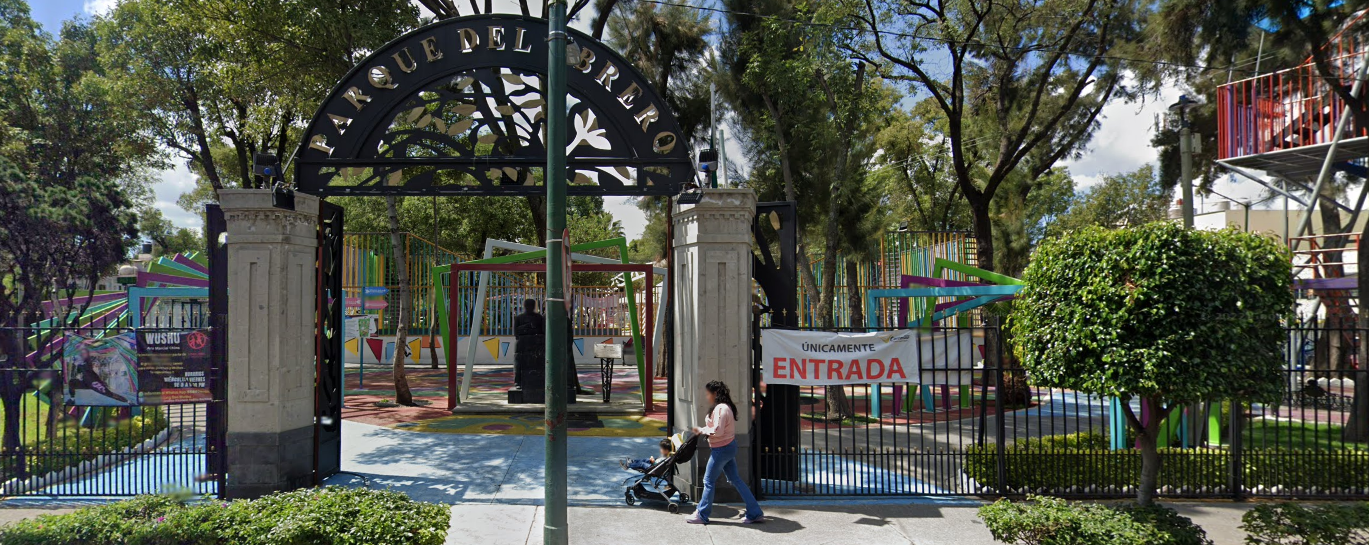
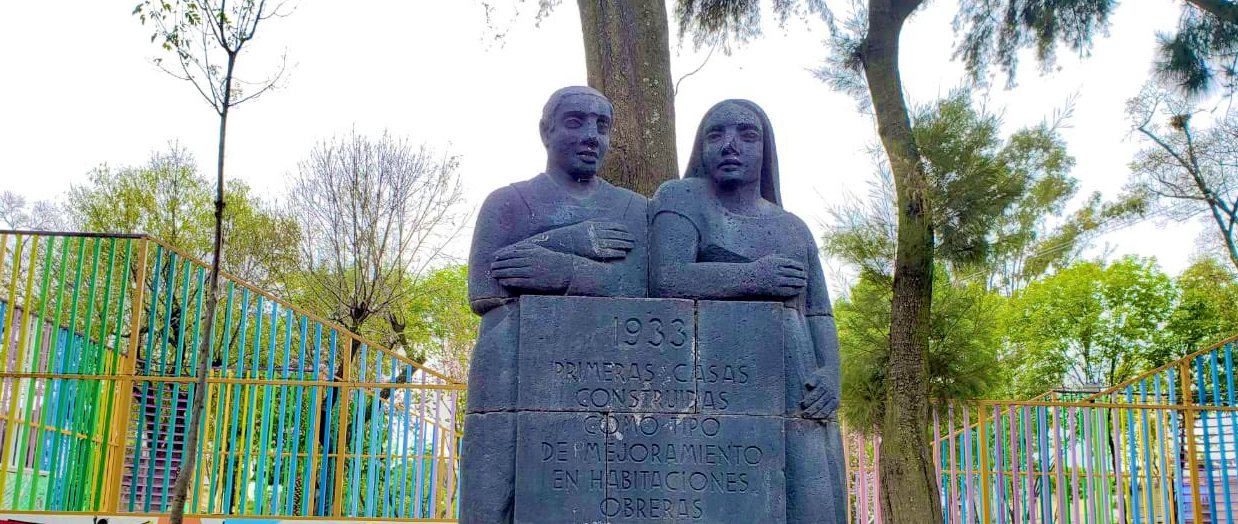
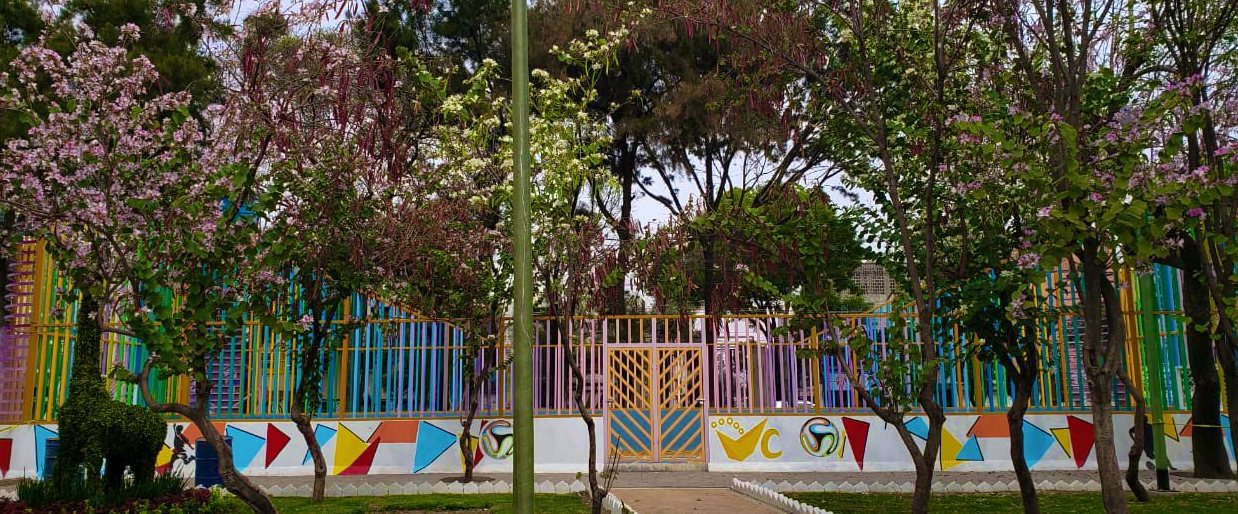
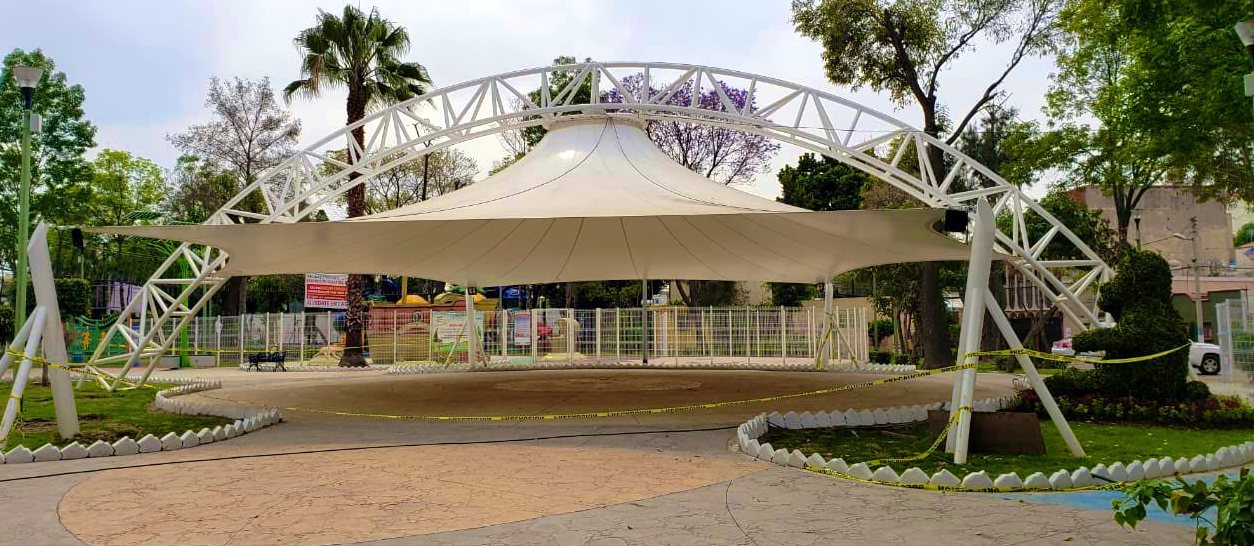

Photos: Alcaldía Venustiano Carranza
The Parque del Obrero is a tiny neighborhood park. For decades, a small monument stood as the park’s only claim to fame. It commemorates the worker housing built in the area.
The name, Obrero, is usually translated as industrial worker. The surrounding neighborhood, the Colonia Aarón Sáenz, stretches just two blocks to the east and the west of the park. It used to be a neighborhood of workers and their families. To some extent it still is, though the number of factories in the area has dwindled. It’s still home to some of the City’s best examples of early functionalist residential architecture. Proud residents may just point some of the best examples out.
The neighborhood is named for Aarón Sáenz Garza (1891-1983). He was a lawyer who got involved early in the Mexican Revolution and rose to be chief of staff of Álvaro Obregón. After the war, Sáenz served as the ambassador to Brazil, and became secretary of Foreign Affairs when Álvaro Obregón became president. He also worked in labor affairs during and after the war and often in securing labor support for the Constitutionalist cause under Venustiano Carranza.
As workers moved into the new neighborhood, Sáenz held the office of Head of Federal District. That was the equivalent of the Mayor of Mexico City at that time. In that role, he oversaw some of the the building of these many residential neighborhoods that extend eastward well into the Colonia Moctezuma. The architect Juan Legoretta’s famous workers’ duplex designs are still present in both neighborhoods.
Today the Parque del Obrero sometimes bears the name “theme park” even despite its small size. A kids train winds through the trees and around the area’s only water park. A giant pirate ship sails in the middle. A neighborhood dog-run also takes up a good corner of the park. But it’s a pleasant and colorful place, for kids, for those minding the kids, and for anyone visiting.
For international visitors, a moment with the monument, not at all unlike the Proletarian Family monument, should remind one that this is in fact a historically significant neighborhood. And generations of residents were better off for it.

Nearest at 0.28 kms.

Nearest at 0.54 kms.
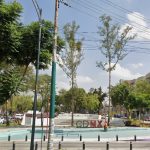
Nearest at 0.58 kms.

A high-rise gallery of art and architecture on the very eastern edge of Tlatelolco . . .
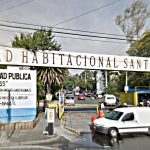
One of the grandest of 1950s housing experiments in Mexico City . . .
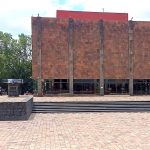
One of Mexico City's most famous residential neighborhoods is today a leafy Modernist neighborhood....

A major cultural venue in Iztapalapa...

A remarkable 1938 shopping and residential complex...